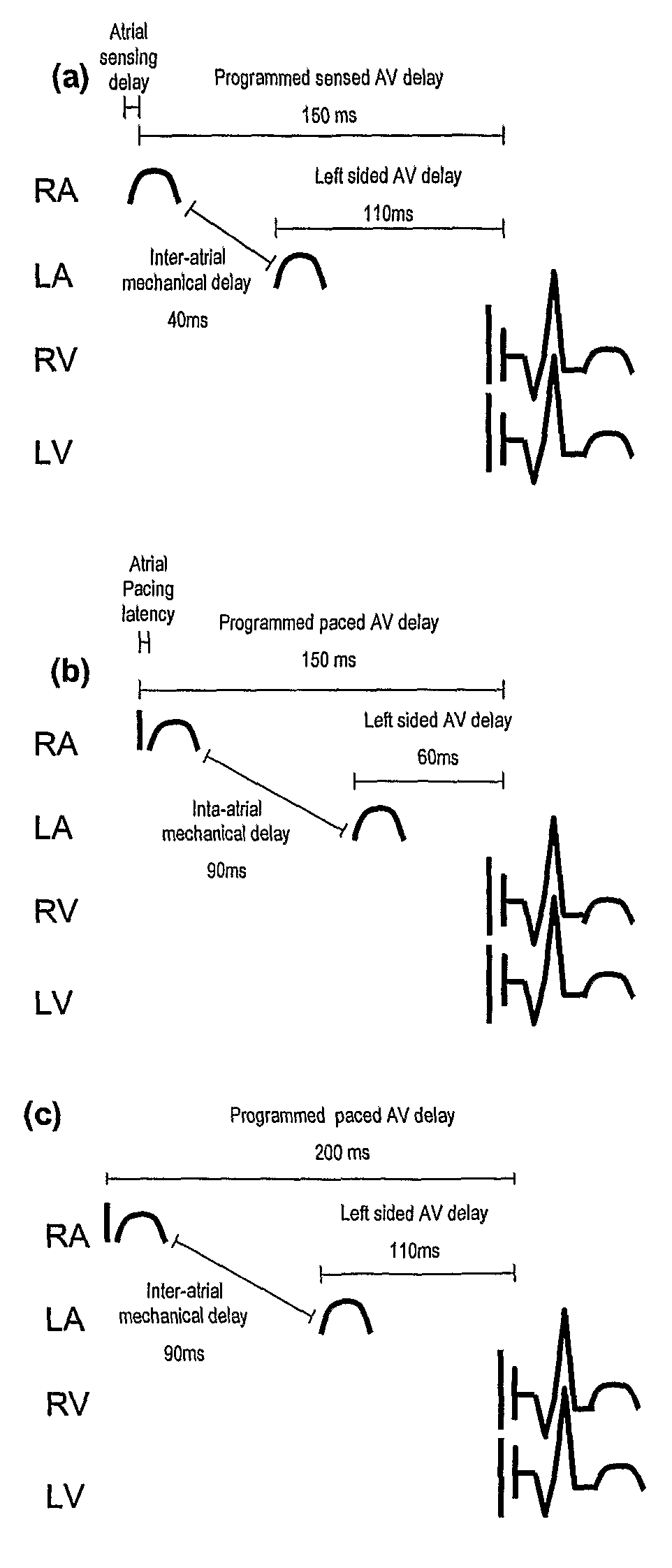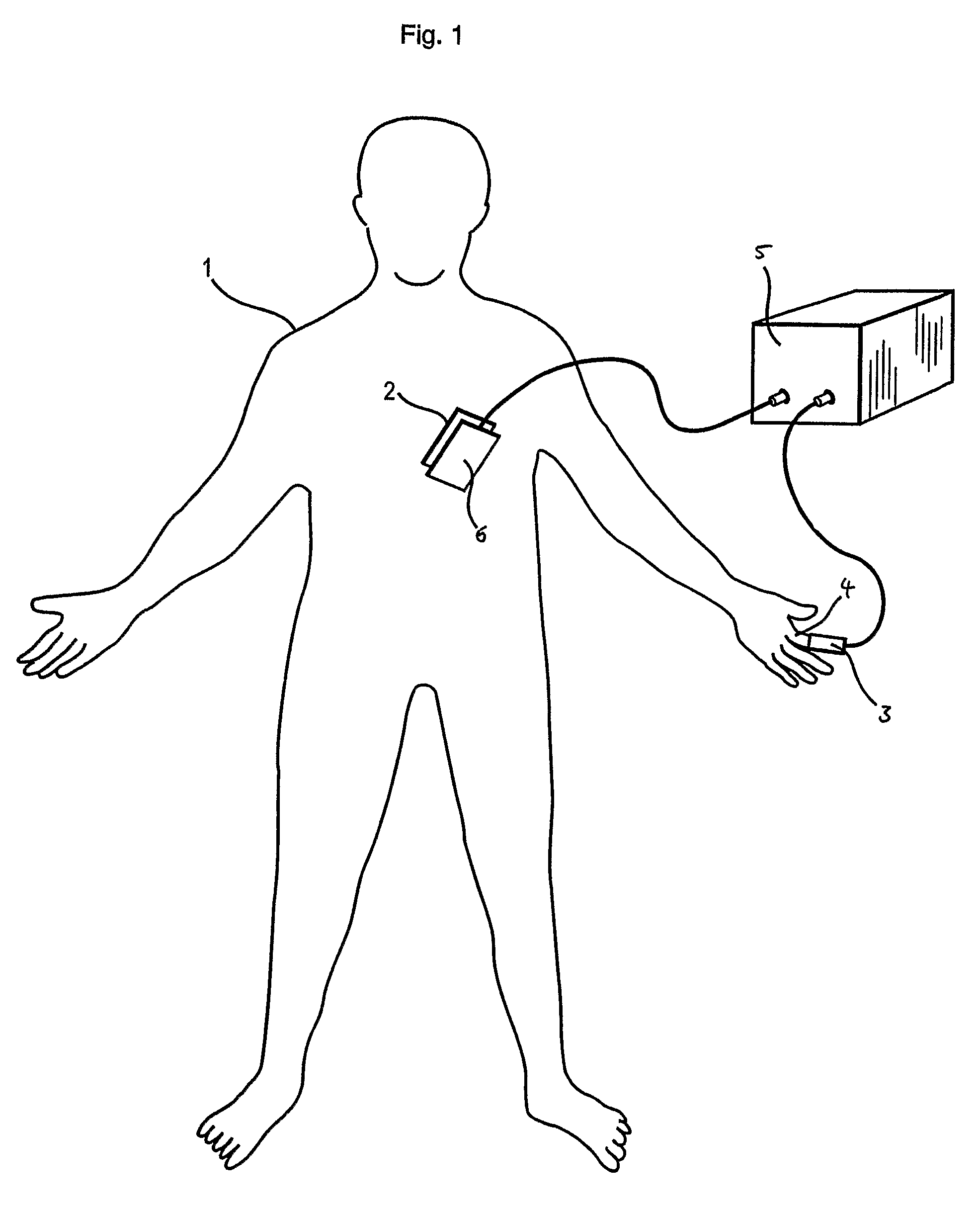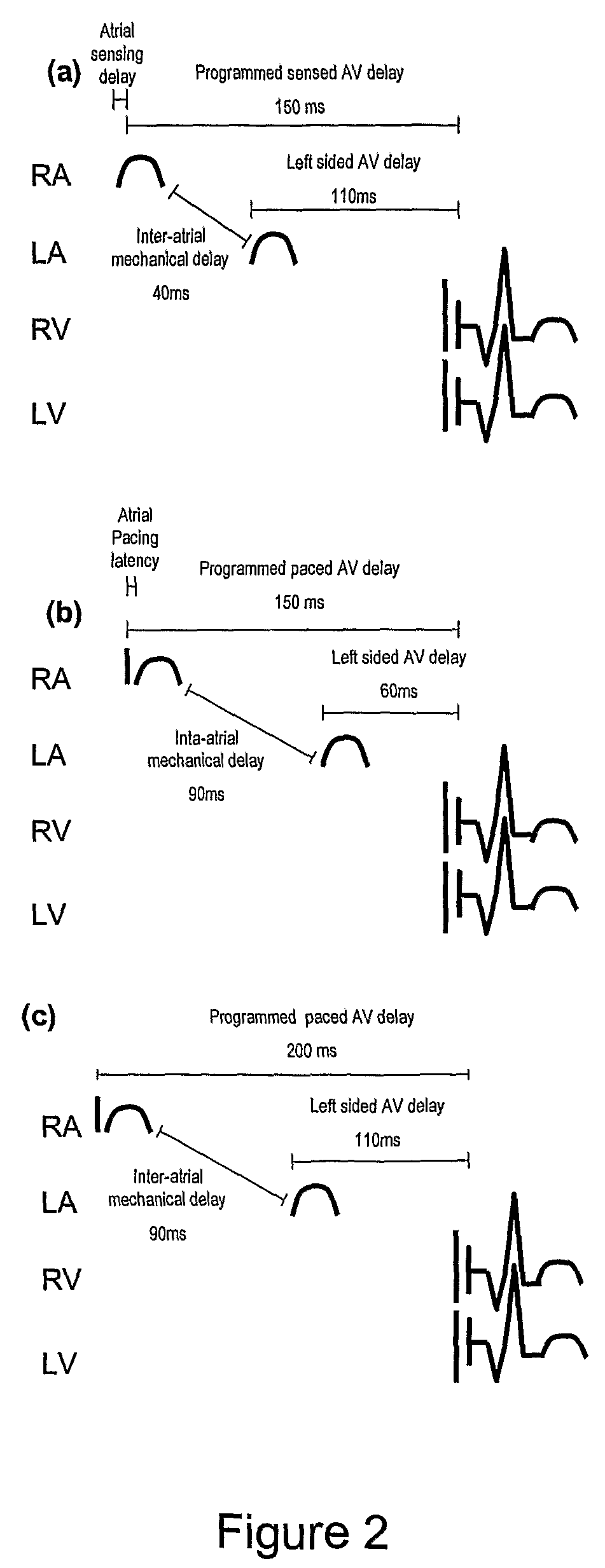Apparatus and method for programming a pacemaker
- Summary
- Abstract
- Description
- Claims
- Application Information
AI Technical Summary
Benefits of technology
Problems solved by technology
Method used
Image
Examples
example 1
[0081]This is a hypothetical example that illustrates why the paced AV optimum is longer than the sensed AV optimum. The left sided AV delay has the predominant effect on cardiac output and systemic hemodynamics.
[0082]FIG. 3a shows a graph of blood pressure vs. time of a hypothetical example of an optimal sensed AV delay. The left sided AV delay is likely to be most important in influencing systemic hemodynamics. In this example the left sided AV delay yielding optimal systemic hemodynamics is 110 ms. If this is achieved by atrial sensing, it is necessary to allow for the atrial sensing delay (here 30 ms) and the inter-atrial delay (here 70 ms). This hypothetical patient therefore requires a sensed AV delay of 110+70−30=150 ms.
[0083]FIG. 3b shows a corresponding graph but with the paced AV delay programmed to the same value as the sensed AV delay (150 ms in this case). This does not yield the same left sided AV delay. The atrial pacing latency and longer inter-atrial delay mean that...
example 2
Subjects
[0085]20 outpatients with biventricular pacemakers or biventricular defibrillators implanted for clinical indications (NYHA III or IV heart failure, QRS>120 ms, maximal medical therapy) were enrolled into the study. Patients were excluded if they were not in sinus rhythm, were pacing dependent or were not able to walk on a treadmill.
[0086]Measurements
[0087]Data Acquisition
[0088]Non-invasive finger arterial pressure measurements were made using a Finometer (Finapres Medical Systems, Amsterdam, Holland). This technique, developed by and Wesseling7 uses a cuff that is placed around the finger, a built-in photo-electric plethysmograph and a volume-clamp circuit that dynamically follows arterial pressure. This technique is well validated for measuring instantaneous changes in blood pressure.8,9,10,11,12
[0089]An ECG signal was also recorded. These signals were acquired via an analog-to-digital card (National Instruments, Austin, Tex.) using custom developed software13 and analys...
PUM
 Login to View More
Login to View More Abstract
Description
Claims
Application Information
 Login to View More
Login to View More - Generate Ideas
- Intellectual Property
- Life Sciences
- Materials
- Tech Scout
- Unparalleled Data Quality
- Higher Quality Content
- 60% Fewer Hallucinations
Browse by: Latest US Patents, China's latest patents, Technical Efficacy Thesaurus, Application Domain, Technology Topic, Popular Technical Reports.
© 2025 PatSnap. All rights reserved.Legal|Privacy policy|Modern Slavery Act Transparency Statement|Sitemap|About US| Contact US: help@patsnap.com



